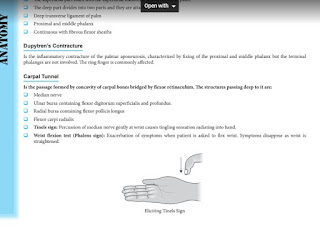Facial Nerve

Facial nerve : Facial nerve enters the ear through the internal auditory meatus . In ear it passes through a bony canal known as Fallopian canal . It has 3 segments : 1) Labyrinthine 2) Horizontal 3) Vertical Labyrinthine segment = narrowest segment= bottleneck of facial nerve Facial nerve has two bends : 1st genu has geniculate ganglion 2nd genu Facial nerve has 3 branches in the ear : 1) branch from 1st genu : greater superficial petrosal nerve supllies the lacrimal glands 2) branch from second genu : nerve to stapedius 3) from vertical segment : chorda tympani nerve , supplies taste sensation to anterior two third of tongue . BELL'S PALSY : Idiopathic sudden...








